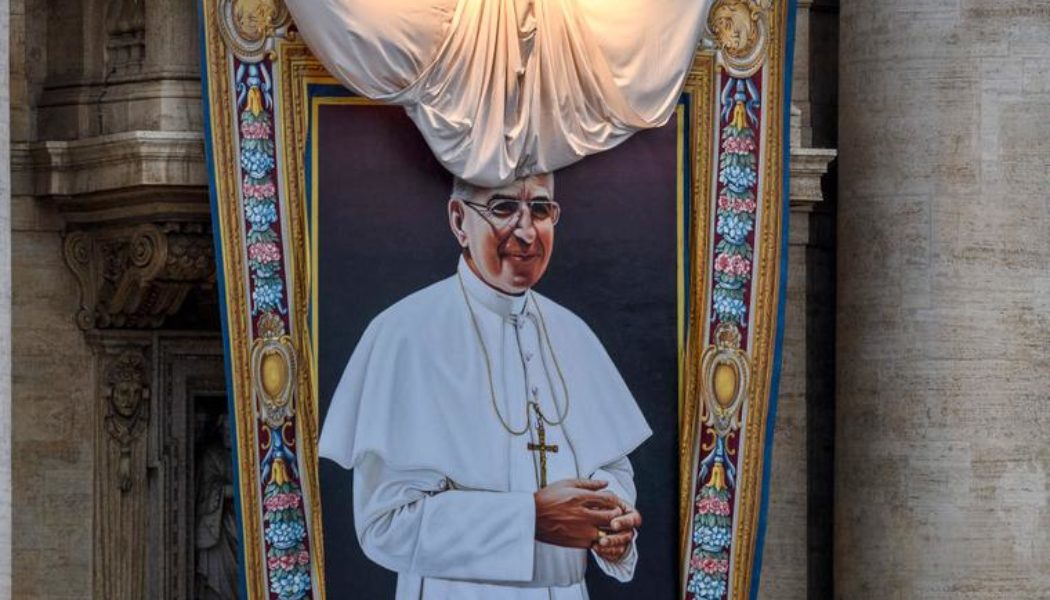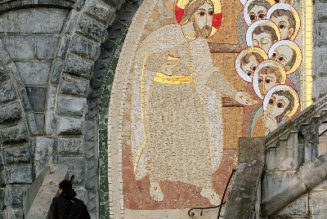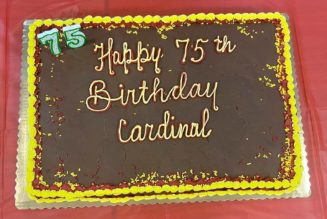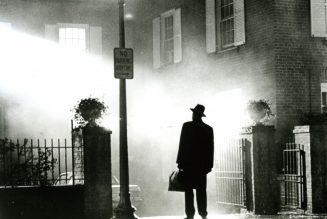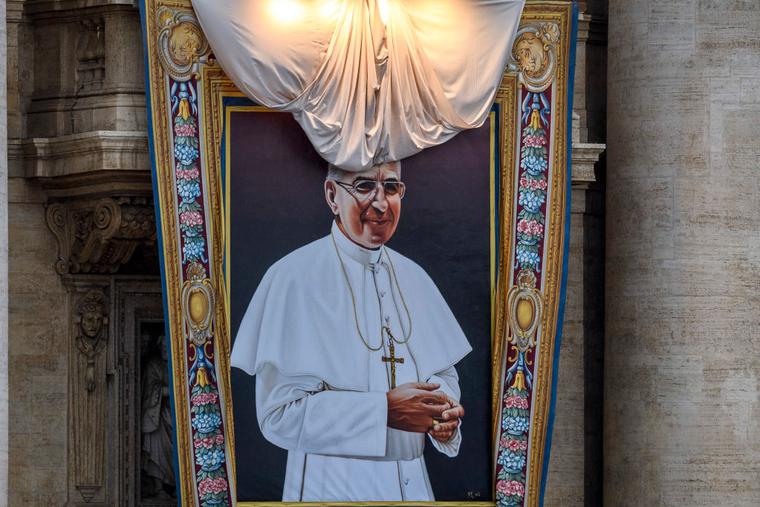
The beatification of Pope John Paul I on Sunday was, like the raising of any Christian disciple to the altars, a recognition of God’s grace at work in the sanctification of a soul. Yet it is also true that Albino Luciani, however holy he may have been as a priest and bishop, would never have attracted sufficient attention for a beatification cause to be opened if he had not served as pope for 33 days in 1978.
Thus the beatification of a pope — the fifth such in this still young century — invites a few considerations on papal causes for beatification and canonization.
Popes are beatified on the same grounds as everyone else — personal holiness sufficiently manifest that it is widely recognized, both during life and after death. They undergo the same process as any other cause, albeit with greater attention paid.
Beatification is not intended to be a historical judgment on their pontificate, no matter how much it might be interpreted as such. St. John Paul II made that clear when beatifying two of his predecessors, Pius IX and John XXIII, who governed the Church in the face of quite different historical challenges.
“It is precisely their holiness that we recognize today,” he preached on Sept. 3 of the Great Jubilee of the Year 2000. “Holiness lives in history and no saint has escaped the limits and conditioning which are part of our human nature. In beatifying one of her sons, the Church does not celebrate the specific historical decisions he may have made, but rather points to him as someone to be imitated and venerated because of his virtues, in praise of the divine grace which shines resplendently in him.”
A Preferential Option for Popes?
Popes ought to be good candidates for sainthood. They are very well known and, if they are indeed holy, a great many people witness that. Their lives are well-documented and records are easily obtained. The same practical reasons that make it easy for religious orders to advance the causes of their members — and which make it difficult to advance the causes of ordinary lay Catholics — apply all the more to popes.
That being said, in different historical periods papal canonizations were more or less common. At the beginning it was the norm.
“Eighty-one popes are saints, and an additional ten have been beatified,” writes Brendan Hodge at The Pillar. “Of those 81 saints, 49 began their pontificates within the first 500 years of the Church’s history.”
Then papal canonizations dried up. After St. Pius V (pope from 1566-1572), the next pope to be canonized reigned more than 300 years later, St. Pius X (1903-1914).
Is it traditional for popes to be canonized? It depends which period of history is considered the norm. We are now in another period of publicly proclaimed papal holiness:
- Pius IX is beatified, (1846-1878).
- There is no active cause for his successor Leo XIII (1878-1903), despite his essential role in positioning the Church for a return to its evangelical roots.
- Pius X has already been canonized.
- There are no causes for the next two, Benedict XV (1914-1922) and Pius XI (1922-1939).
- Pope Pius XII (1938-1958) has already been declared “Venerable” meaning that only a miracle is needed for his beatification.
Then the saints veritably go marching in:
- St. John XXIII (1958-1962)
- St. Paul VI (1962-1978)
- Blessed John Paul I (1978)
- St. John Paul II (1978-2005)
There are no active causes for Benedict XVI or Pope Francis, both failing to meet the first criterion for sainthood: being dead. And yet, speaking of the impressive parade of his predecessors, the Holy Father joked in 2018 that after Paul VI and John Paul I, “Benedict and I are on the waiting list! Pray for us.”
More than once the joke has been heard among veteran Roman observers that Francis, never one to be shackled by hidebound conventions, will boldly break all precedent and beatify Benedict and himself before his death.
Coinage Debased?
There are murmurings in Rome that in beatifying several recent popes the value becomes diminished, a halo becoming posthumous retirement gift. Some critics have suggested that that is precisely the point, to diminish the canonization of John Paul the Great by making it seem routine. Grist for that mill was provided by Pope Francis exempting John XXIII from the requirement of a second miracle for canonization in order that he could be canonized alongside John Paul II.
The too-many-popes-on-the-list criticism is a version of the criticism made against John Paul when he dramatically revised the procedures for canonization in 1983, shortening the waiting period from 50 years to five, and reducing by half the number of miracles needed. The resulting explosion in new blesseds and saints, especially from recent decades, was thought by some to be too much. John Paul thought it exactly right; that there could not be too many saints. In any case, the Church only recognizes the saints God has made, he argued, and thus the fault lies elsewhere and upward.
Hagiography for His Holiness
The relative lack of interest in the beatification of John Paul I and the brevity of his pontificate do raise the objection that “Papa Luciani” — as Pope Francis called him during his homily to avoid the confusion of everyone thinking of the successor when “John Paul” is mentioned — was beatified simply because he was pope, given that he had no time to do anything as pope.
The official Vatican biography provided for the beatification Mass made that point somewhat hilariously and unintentionally when it was claimed that his general audiences “left their mark in the history of catechesis.” They didn’t. There were only four of them and — like most entries in that genre — were largely forgotten. In fairness, the biographers did not have much to work with, but it’s the kind of thing that gives hagiography a bad name.
Providential Dates
Upon beatification, a feast day is assigned to the new beatus. Usually it is the death day — the dies natalis or “birthday” to eternal blessedness in heaven. However, if the death day is already a feast day in the universal calendar, efforts are made to choose another date.
- St. John XXIII died on June 3, 1962 (memorial of the Ugandan martyrs), so his feast is assigned to Oct. 11, opening date of Vatican II, when he delivered his great “Gaudet Mater Ecclesia” address.
- St. Paul VI died on Aug. 6, 1978 (Transfiguration) so his feast was originally assigned to his birthday (Sept. 26,) before being changed to the anniversary of his priestly ordination (May 29).
- St. John Paul II died on April 2, 2005, but that date often falls in Holy Week or the Easter octave. His feast day was assigned to Oct. 22, the occasion of the historic “Be Not Afraid” homily at the solemn inauguration of his pontificate.
Pope John Paul I died on Sept. 28, which is the feast of St. Lorenzo Ruiz and the Filipino martyrs, as well as that of St. Wenceslaus. John Paul’s feast day has thus been assigned to Aug. 26, the date of his election as pope in 1978.
Therein lies an interesting Providence of dates. Poland’s national Marian feast date is Aug. 26, feast of Our Lady of Częstochowa. After Cardinal Karol Wojtyła was elected in 1978, it was noted by some — including the new pope himself — that the date of his election Oct. 16, was another Polish feast, St. Hedwig of Silesia. Electing a non-Italian pope after four centuries was a true earthquake in the Church. Could it have been that the Polish Madonna and the communion of Polish saints were intercessors for that Providential turn?
Certainly at the annual celebrations in Częstochowa, Blessed John Paul I will now be linked to his successor. The pontificate that began that day would be exceptionally brief precisely to allow for the coming of a new, unexpected and saintly pope.
Join Our Telegram Group : Salvation & Prosperity
